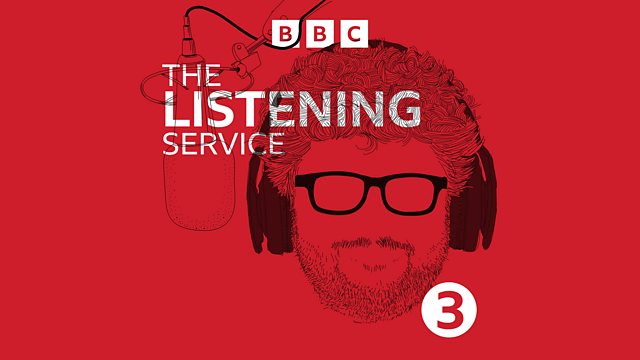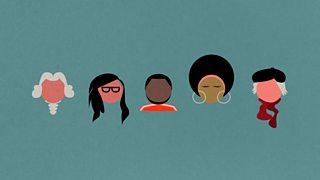Playing at sight and playing from memory
Tom Service flexes his musical memory muscles whilst also improving his sight reading.
Tom Service on two of the most astounding musical skills, which the majority of professional classical musicians have in abundance - the ability to play from memory, and the ability to play at sight, without study or much in the way of rehearsal. How and why do they do it?
With pianist and teacher Richard Sisson, and violinist Eva Thorarinsdottir, of the Aurora Orchestra, whose members are unusual in that they often play from memory as an ensemble.
Last on
More episodes
Previous
Music Played
-
![]()
Johann Sebastian Bach
Partita no. 3 in E major BWV.1006 for violin solo
Performer: Viktoria Mullova.- ONYX.
- 40-40.
-
![]()
Gustav Mahler
Symphony No 9_���˿��� National Orchestra of Wales
Orchestra: ���˿��� National Orchestra of Wales. Conductor: Thomas Søndergård. -
![]()
Sergey Rachmaninov
Concerto no. 4 in G minor Op.40 for piano and orchestra
Performer: Leif Ove Andsnes. Performer: London Symphony Orchestra. Conductor: Sir Antonio Pappano.- EMI CLASSICS.
- 6405162.
-
![]()
Johann Sebastian Bach
Prelude and fugue from Das Wohltemperierte Klavier, bk.2 no. 16 in G minor BWV.885
Performer: Sir András Schiff.- DECCA.
- 417 236-2-.
-
![]()
Ludwig August Lebrun
Concerto no. 2 in G minor for oboe and orchestra
Performer: Albrecht Mayer. Performer: Potsdam Chamber Academy.- DEUTSCHE GRAMMOPHON.
- 479 2942.
-
![]()
Frédéric Chopin
Waltz in E minor Op.posth. for piano [B.56]
Performer: Vladimir Ashkenazy.- London.
- 443 7382.
-
![]()
Ludwig van Beethoven
Concerto in D major Op.61 for violin and orchestra
Performer: Anne‐Sophie Mutter. Performer: New York Philharmonic. Conductor: Kurt Masur.- DEUTSCHE GRAMMOPHON.
- 471 349-2.
-
![]()
William Walton
Touch her soft lips and part from "Henry V", arr. Richard Rodney Bennett
Performer: Philharmonia Orchestra. Conductor: William Walton.- EMI.
- CDM 5 650072.
-
![]()
Franz Liszt
6 Grandes etudes de Paganini S.141 for piano
Performer: Daniil Trifonov.- DEUTSCHE GRAMMOPHON.
- 479 5529.
-
![]()
Frédéric Chopin
Ballade no. 3 in A flat major Op.47 for piano
Performer: Emanuel Ax.- RCA RED SEAL.
- 82876 72554 2.
-
![]()
George Enescu
Impressions d'enfance Op.28 for violin and piano
Performer: Patricia Kopatchinskaja.- Naive.
- V 5193.
-
![]()
Franz Schubert
Fantasy in C major D.760 (Wandererfantasie) for piano
Performer: Sviatoslav Richter.- EMI.
- 631 8102.
-
![]()
Igor Stravinsky
The Firebird - suite
Performer: Aurora Orchestra. Conductor: Nicholas Collon. -
![]()
Dmitry Shostakovich
Moscow Cheryomushki - musical comedy Op.105
Performer: Residentie Orkest. Conductor: Gennady Nikolayevich Rozhdestvensky.- CHANDOS.
- CHAN-9591.
-
![]()
Claude Debussy
Children's corner for piano
Performer: Pascal Rogé.- DECCA.
- 417-792-2.
-
![]()
François Couperin
Les Baricades misterieuses [from ordre no.6], arr. Thomas Ades for ensemble
Performer: Aurora Orchestra. Conductor: Nicholas Collon.- Warner Classics.
- 0825646082230.
Broadcasts
- Sun 16 Jan 2022 17:00���˿��� Radio 3
- Fri 21 Jan 2022 16:30���˿��� Radio 3
- Sun 27 Aug 2023 17:00���˿��� Radio 3
- Fri 1 Sep 2023 16:30���˿��� Radio 3
Why do we call it 'classical' music?
Tom Service poses a very simple question (with a not-so-simple answer).
Six of the world's most extreme voices
From babies to Mongolian throat singers: whose voice is the most extreme of all?
How did the number 12 revolutionise music?
Why are we all addicted to bass?
Watch the animations
Join Tom Service on a musical journey through beginnings, repetition and bass lines.
When does noise become music?
We like to think we can separate “noise” from “music”, but is it that simple?
Podcast
-
![]()
The Listening Service
An odyssey through the musical universe, presented by Tom Service





